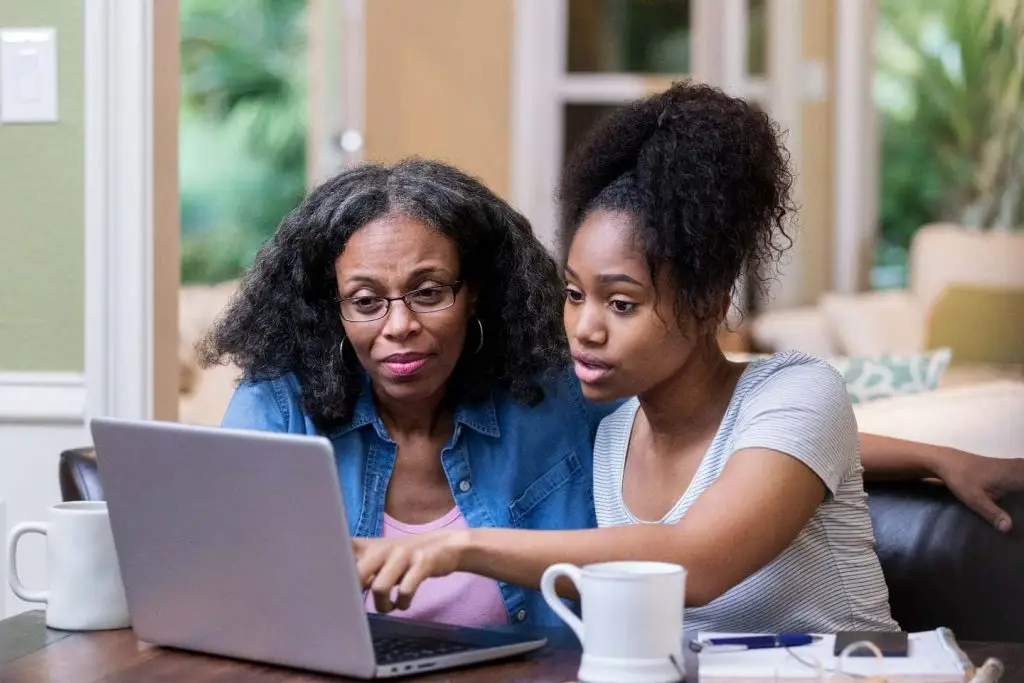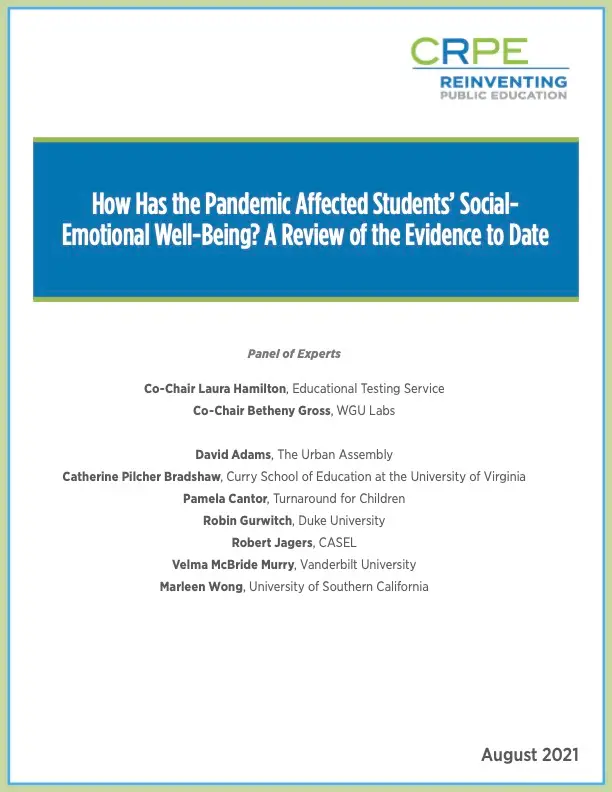Overview
The COVID-19 pandemic upended daily life for every family and school across the United States. But its impacts were not universal. The inequities that cut across classrooms and communities have contributed to broad disparities in the losses, trauma, and isolation that many students and educators have endured. In addition, the converging social events of 2020–21, including protests for racial justice, a contentious presidential election, and a riot at the Capitol, have challenged young people to make sense of a turbulent era that few adults may yet fully understand.
In June of 2021, the Center on Reinventing Public Education (CRPE) gathered a panel of eight experts in child development, adolescent mental health, and social-emotional learning to assess and reflect on new research exploring the pandemic’s effects on student well-being, social emotional development, and ability to learn. In this paper, our panel situates these findings in context and offers an agenda for researchers and practitioners to work from in the years ahead.
Panel of Experts
- Co-Chair Laura Hamilton, Associate Vice President for Research Centers, Educational Testing Service
- Co-Chair Betheny Gross, Research Director, WGU Labs
- David Adams, CEO, The Urban Assembly
- Catherine Pilcher Bradshaw, Professor and Associate Dean for Research and Faculty Development, Curry School of Education at the University of Virginia
- Pamela Cantor, Founder and Senior Science Advisor, Turnaround for Children
- Robin Gurwitch, Professor, Department of Psychiatry and Behavioral Sciences, Duke University
- Robert Jagers, Vice President of Research, CASEL
- Velma McBride Murry, Lois Audrey Betts Chair in Education and Human Development, University Professor of Human and Organizational Development, and University Professor of Health Policy, Vanderbilt University
- Marleen Wong, David Lawrence Stein/Violet Goldberg Sachs Professor of Mental Health at University of Southern California
A Shock to Student Lives
The pandemic affected the lives and social-emotional experiences of every student to some extent. Along with the unprecedented closures of schools across the country in March 2020, virtually all social activities ceased. Students were cut off from their teachers, with uneven access to live instruction and hands-on, collaborative learning. There were few opportunities to see friends in person or engage in extracurricular activities. At the same time, many students also were contending with the pandemic’s frightening impacts on their family’s health and welfare, such as illness, the death of a relative or neighbor, and economic hardship. Some students also took on new responsibilities to care for younger siblings or contribute to family finances.
The human losses and financial tolls were more commonly experienced by Black, Hispanic/ Latinx, and indigenous students from lower-income communities. One survey found 41 percent of these young people reported providing care for someone else in their household and 62 percent reported being financially affected by the pandemic. These students also were more likely to be separated from in-person schooling for longer periods of time. In May 2021—some 14 months after the start of the pandemic—just 47 percent of high-minority school districts were operating fully in person compared to 61 percent of low-minority districts. In addition, chronic absenteeism is thought to have risen dramatically, especially among students of color, though attendance record-keeping was not consistent.
Not every student’s experience was wholly negative. Some families transitioned too remote learning and work with relative ease—enjoying more unscheduled time together and ever boosting their economic security during long months at home. Some students reported they preferred remote learning as a means to avoid social stresses or racial microaggressions they encountered at school. And some students undoubtedly developed resilience and thrived in ways that they would not have in the absence of the events of 2020 and 2021.
Fast-Moving Research in Tumultuous Times
Over the past year, researchers have worked faster than ever before to collect and analyze data on the experiences of young people. As a result, the field has a substantial account of the pandemic and its likely implications for youth. But students’ experiences were vastly different from one another during this time, based on their proximity to illness and loss, gender and race, age, and length of school closures, among other factors. One of the biggest areas of concern is the extent to which contextual variations between those experiences will affect individual development over the longer term.
This leads to a note on the scope of this report. While the factors contributing to students’ mental health and social-emotional development are expansive, our panel focused on the research exploring the effects of the pandemic and school closures on children and young people in grades K–12 in the U.S. We recognize that long-standing structural racism shaped the pandemic’s impact in meaningful ways, and that a nationwide reckoning over that reality has affected student well-being and development. This review does include research that considers racism’s effects in the context of the pandemic; however, far more can be examined and discussed than reflected here. We believe these issues should be considered in their full, complex, and essential breadth.
In addition, we acknowledge that the pandemic has taken a significant toll on adult caregivers and educators. Parents who may have been juggling their own fears of illness or economic hardship have had to step in as teachers to support young learners throughout the school day. Meanwhile, teachers were adapting instruction to fit often unfamiliar technological platforms while attempting to build and foster nurturing relationships with students they’d never met in person. A survey in late 2020 found that 78 percent of teachers reported frequent job-related stress and 27 percent said they were depressed, compared to average rates of 40 percent and 10 percent, respectively. While these adult issues are beyond the scope of this report, the well-being of families and educators should also be a significant area of focus as young people return to the classroom full-time.
What the Research Says So Far
Our main findings reveal widespread impacts on students’ mental health, while the effects of the pandemic on social-emotional development are less understood. More than anything, our panel felt that the pandemic revealed how inadequately we serve students’ mental health and social-emotional development in normal times.
The review also uncovered an urgent need for more effective social-emotional learning opportunities and innovative approaches to expand student supports. This calls for an integrated and responsive system of education and tailored supports, one that can flexibly meet each individual student’s highly variable needs on an immense, post-pandemic scale.
To inform this recovery work, our panel summarized the main research findings to date, explored what those findings tell us about student mental health and social-emotional learning, and identified the pressing questions still in need of answers. Looking ahead, researchers should focus on how schools and leaders can partner with community-based sources of support and stability, how race factors into students’ experiences and well-being, and how to more comprehensively define and measure school and student success.







